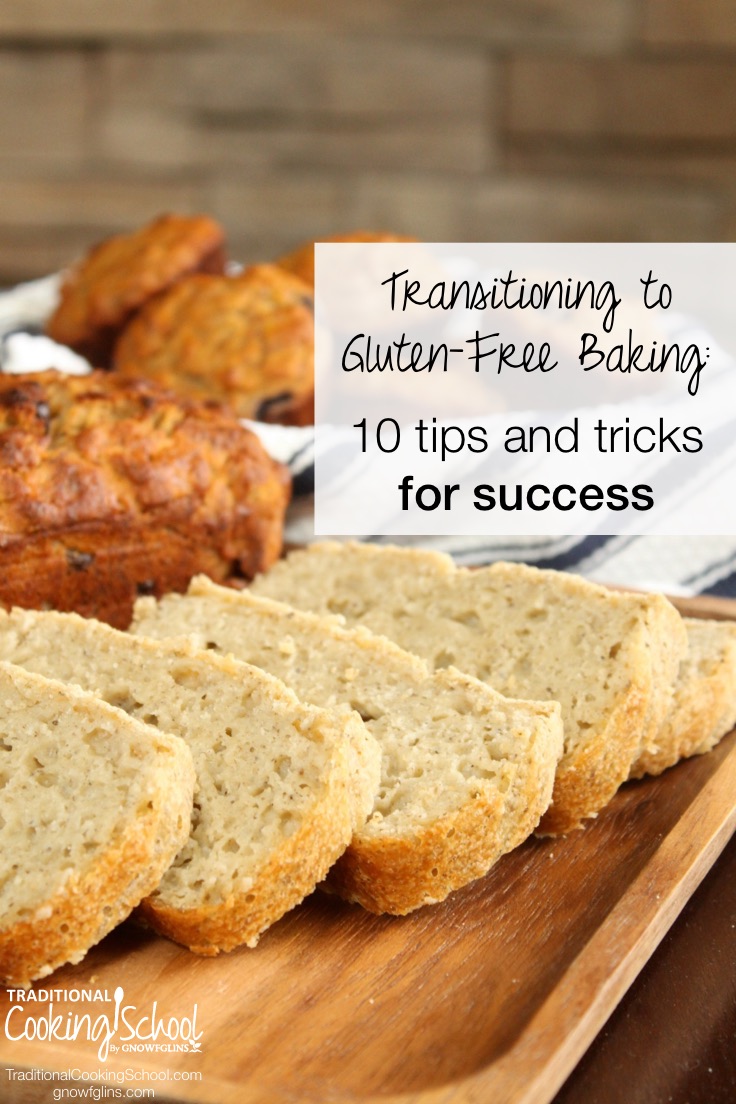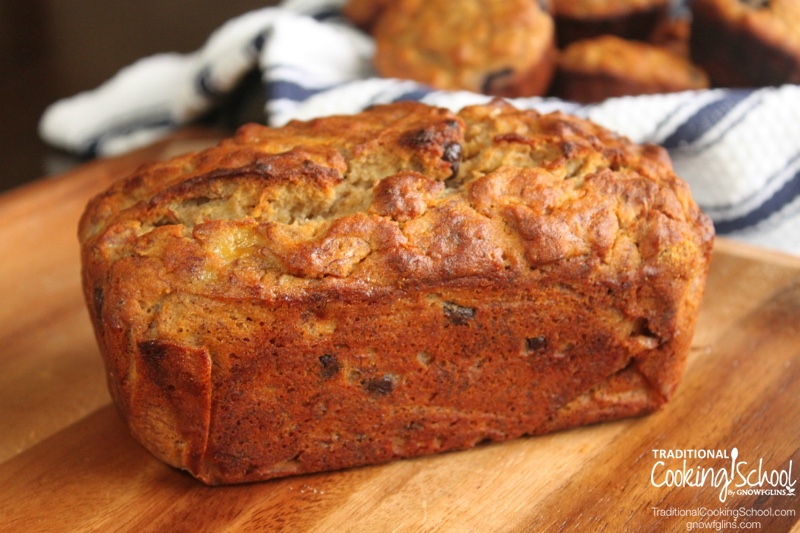
I’m a long-time baker, and I’ve been gluten-free for the past 3 months!
During this time, I’ve craved good, healthy, baked goods.
As I navigated the world of gluten-free flours, starches, gums, and endless lists of substitutes, I learned a few things that made my baked goods both better and healthier.
Here are my top 10 tips to help you make the transition successfully and healthfully.
5 Tips for a Successful Transition
1. Change your expectations.
Gluten-free baked goods, especially bread, will not look, taste, or feel like their glutinous cousins. Remind yourself that different is not bad, it’s just different.
2. Don’t play around with the recipes (at least, not at first).
When I baked with wheat, I was constantly changing recipes, adding things, taking things out, changing ingredients. When cooking gluten-free, flours, liquids, starches and rising agents are in a much more delicate balance, and when the balance is upset, baking disaster often ensues.
If you love to experiment, give yourself some time to get used to this new way of baking first.
3. Almost anything can be salvaged!
I probably shouldn’t admit this, but in my pre-gluten-free days, some of my baking disasters have gone straight to the trash. With the increased expense of gluten-free ingredients, I soon discovered that almost anything could be saved.
I used a much-too-runny pizza dough batter to make popovers, created bread crumbs and apple crumble topping from crumbly breads, and ate “pizza” in a bowl instead of by the slice. When disaster strikes, take a deep breath and soldier on.
4. Put it in the freezer.
Gluten-free foods that tasted wonderful the day they were baked are often dry and crumbly by the next day. Save yourself from the disappointment and pop your freshly baked goods into the freezer (slice breads first!). When you are ready to enjoy them, warm them in a toaster or toaster oven and they will taste like the day you made them.
5. Experiment with different flours.
Not all gluten-free flours or flour blends are created equal. I experienced several baking fails in a row until I bought a different brand of brown rice flour.
5 Tips for Healthier Gluten-Free Baking
If you aren’t careful, with all of the substitutions, gums, and starches, gluten-free baked goods often turn out not much better than the white-flour baked goods we all avoid. Here are a few tips for healthier baking options.
1. Skip the gums.
Xanthan gum and guar gum seem like gluten-free necessities, but they don’t have to be. Substitute the gum in equal amounts with ground chia seeds, ground flax seeds, or psyllium seed husk. Mix with a little hot water to create a gel and add with the wet ingredients. Gelatin can also be used as a substitute, although I have not yet experimented with this myself.
2. Reduce the starch.
Most gluten-free flour mixes are at least 1/3 starch (arrowroot, tapioca and potato are the most common). The starch provides structure to the breads and is important for baked goods to have the right consistency. But lots of creative health-conscious folk have spent time creating recipes that rely less on starches. These recipes are worth looking for.
3. Consider soaking and sprouting.
Most gluten-free grains benefit from soaking to make them more digestible, just as their gluten-filled cousins. Sprouting is also a great option, and sprouted brown rice flour is becoming increasingly easy to find.
4. Experiment with sourdough.
Purchase a gluten-free sourdough starter or start your own (you can even give it a head-start with a little kombucha).
5. Eat less baked goods.
I never realized how many baked goods I ate until I had to go on a gluten-free diet. Although I will always love baking, baked goods have become treats instead of everyday staples.
I eat salads instead of sandwiches, use large leaves of lettuce to make wraps, and make porridge or eggs for breakfast instead of relying on muffins, pancakes, or toast.
Are you or someone in your family on a gluten-free diet? Please share your favorite tips for baking gluten-free!
For more info on low-starch or no starch gluten-free flour blends, or ingredients other than gums for thickening, see our Allergy-Free Cooking class at Traditional Cooking School.
Wondering if gluten-free is a fad or a necessity? Read this.
...without giving up the foods you love or spending all day in the kitchen!

2 free books:
Eat God's Way
Ditch the Standard American Diet, get healthier & happier, and save money on groceries...
We only recommend products and services we wholeheartedly endorse. This post may contain special links through which we earn a small commission if you make a purchase (though your price is the same).



Welcome to the world of the gluten free. I have been gluten free now for almost two years and have certainly noticed the changes in the supermarket as the grocery and food manufacturers figure out there are more of us out here than they thought. HOWEVER, as I read in an article recently – can’t remember where – most of what you will find in the gluten free aisle of your grocery store is as unhealthy or even more unhealthy than much of what is found elsewhere in the store. Processed food is processed food. Like you, we have made baked goods a treat instead of a daily part of our lives. Using my Paderno spiralizer I can make pasta from vegetables; using a recipe for something called Oopsies (made with egg white, yolks and cream cheese and psyllium husk, I served french toast for breakfast yesterday when my son visited. He who is a firm white bread eater pronounced them “pretty good”.
I will definitely give Oopsies a try – thank you!
Great article! I don’t know how I feel about the “gums” so I try to avoid them. I have a flour blend that I enjoy using that has Xanthan gum in it. I will just make it myself now and use the ground flaxseed.
Thank you!